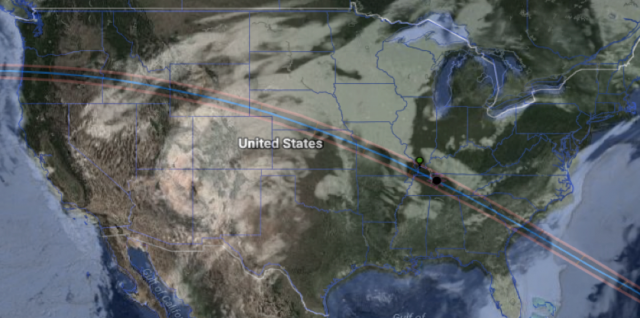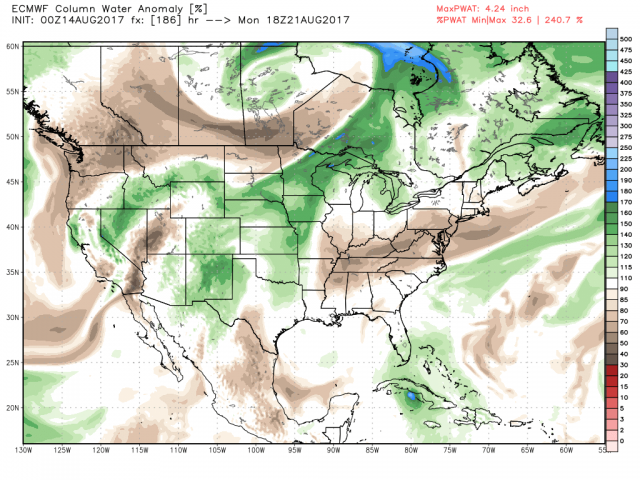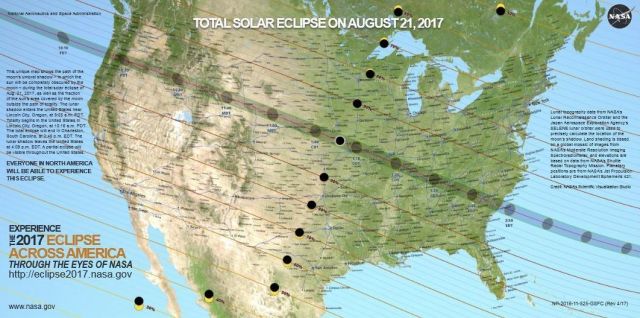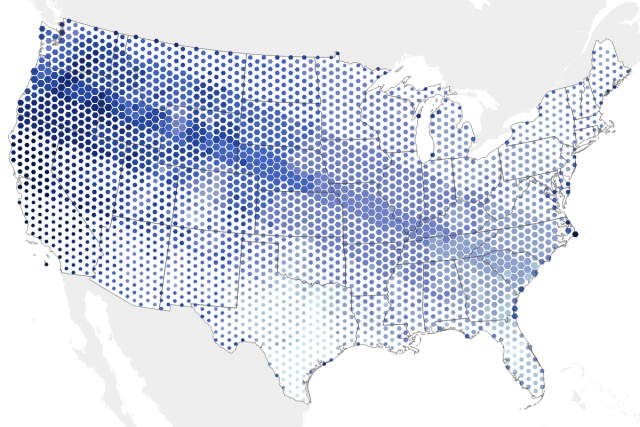Eclipse Viewing Outlook 8 years ago
August 14, 2017
The total eclipse next Monday will last just 90 minutes as the lunar shadow sweeps coast to coast at more than 1,500 mph starting at about 1:15 p.m. EDT (10:15 a.m. PDT) on the West Coast and ending at 2:49 p.m. EDT on the East Coast. The sun’s normally invisible outer atmosphere, known as the corona, will appear as a halo in the area of totality.
Cloudcover forecasting a week in advance is imprecise, which is compounded by the relatively short window of eclipse viewing. The current forecast shows a fair amount of cloud cover during the transit. The clearest skies are expected to be in the Northwest and near the area with the longest dark period from southern Illinois to Kentucky. This is still a week away and changes are quite likely, but for now, this is the "best guess".

In the absence of clouds, high moisture content can result in haze that inhibits viewing clarity. Areas in green are moist and brown areas are drier than normal for August 21:

Here is a still image of NASA's interactive page.

It will be the first total solar eclipse in 99 years to cross coast-to-coast and the first to pass through any part of the Lower 48 states in 38 years. Darkness will last just under two minutes in Oregon, gradually expanding to a maximum two minutes and 44 seconds in Shawnee National Forest in southernmost Illinois, almost into Kentucky, then dwindling to 2 1/2 minutes in South Carolina.
NASA has constructed a map with the path and their forecast of the best viewing (darker area).

We will continue to update the forecast all this week as the event gets closer.
Additional information